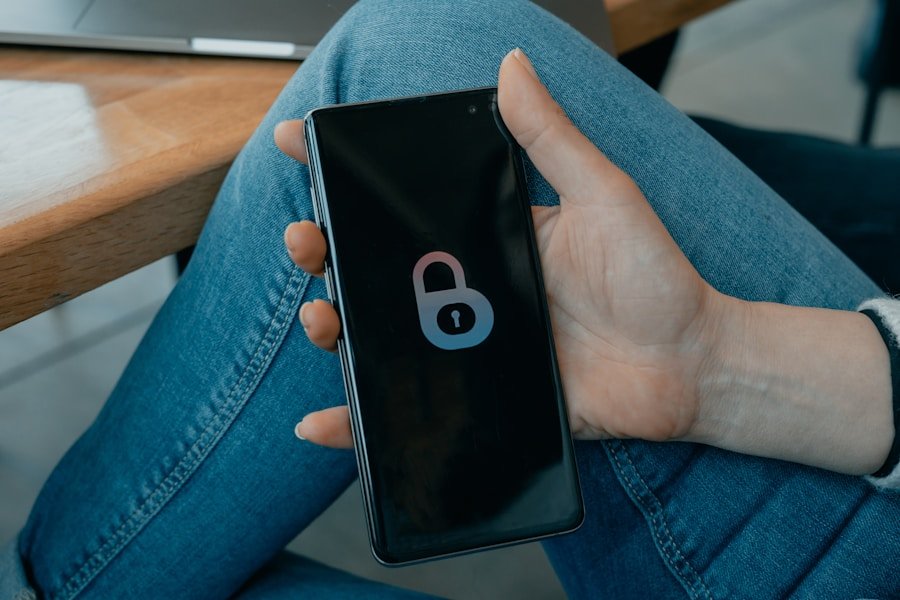SMS phishing, also referred to as smishing, is a form of cyber attack in which criminals utilize text messages to deceive individuals into divulging sensitive information or accessing malicious links. These fraudulent messages often masquerade as legitimate communications from reputable sources, such as financial institutions, government agencies, or well-established companies, with the intention of convincing recipients to take actions that compromise their personal or financial data. The prevalence of smishing attacks has increased in recent years, coinciding with the growing reliance on mobile devices for communication and online transactions.
Smishing attacks can manifest in various forms, including fake security alerts, notifications of purported package deliveries, and offers of free prizes or gift cards. These messages frequently employ urgent language and may contain links or phone numbers that recipients are encouraged to access or call. Upon engaging with the message, recipients may be redirected to a fraudulent website that mimics a legitimate one, where they are prompted to enter their personal information.
In some instances, clicking on a link in a smishing message can also result in the installation of malware on the recipient’s device, thereby jeopardizing their data.
Key Takeaways
- SMS phishing, or smishing, is a type of cyber attack that uses text messages to trick individuals into providing sensitive information or clicking on malicious links.
- Smishing works by sending text messages that appear to be from legitimate sources, such as banks or government agencies, to deceive recipients into taking action that compromises their personal information.
- Common tactics used in smishing include creating a sense of urgency, offering fake rewards or prizes, and using familiar or trusted sender names to gain the recipient’s trust.
- Signs of smishing include receiving unsolicited text messages requesting personal information or urging immediate action, as well as messages containing suspicious links or attachments.
- To protect yourself from smishing attacks, be cautious of unsolicited text messages, avoid clicking on links or providing personal information in response to text messages, and consider using security software to detect and block smishing attempts.
How Does SMS Phishing Work?
SMS phishing works by exploiting the trust and curiosity of recipients to manipulate them into taking actions that benefit the attacker. The attackers behind smishing campaigns often use social engineering techniques to craft messages that appear urgent or compelling, in order to prompt recipients to act without thinking critically about the legitimacy of the message. By creating a sense of urgency or offering enticing rewards, smishers aim to bypass recipients’ natural skepticism and elicit the desired response.
One common tactic used in smishing attacks is the use of shortened URLs or link shorteners to disguise malicious links. These shortened links can make it difficult for recipients to discern the true destination of a link before clicking on it, increasing the likelihood that they will fall victim to the attack. Additionally, smishers may use spoofing techniques to make it appear as though their messages are coming from a trusted source, further deceiving recipients into believing that the message is legitimate.
By exploiting these psychological vulnerabilities and technological loopholes, smishing attackers are able to successfully carry out their fraudulent activities.
Common Tactics Used in SMS Phishing
There are several common tactics used in SMS phishing attacks to deceive and manipulate recipients. One such tactic is the use of urgent language and threats to create a sense of panic or fear in recipients. Messages may claim that there has been suspicious activity on the recipient’s account, that their account is at risk of being suspended, or that they have won a prize that must be claimed immediately.
By using urgent language and threats, smishers aim to pressure recipients into taking immediate action without questioning the legitimacy of the message. Another common tactic used in smishing attacks is the use of fake offers or prizes to entice recipients into engaging with the message. These messages may claim that the recipient has won a free gift card, prize, or vacation, and provide a link or phone number for them to claim their reward.
By offering something of value, smishers hope to pique recipients’ curiosity and encourage them to click on the provided link or call the provided number. Once recipients engage with the message, they may be directed to a fake website where they are prompted to enter their personal information, or they may be asked to provide sensitive information over the phone.
Signs of SMS Phishing and How to Spot Them
| Topic | Details |
|---|---|
| What is Smishing? | Smishing is a form of phishing that involves the use of SMS or text messages to deceive individuals into providing sensitive information or clicking on malicious links. |
| Common Tactics | Common tactics used in smishing include impersonating legitimate organizations, creating a sense of urgency, and using shortened URLs to hide malicious links. |
| Red Flags | Red flags to watch out for in smishing messages include unsolicited requests for personal information, grammatical errors, and generic greetings. |
| Protecting Yourself | To stay safe from smishing, it’s important to verify the sender, avoid clicking on links from unknown sources, and use security software on your mobile device. |
| Reporting Incidents | If you receive a smishing message, report it to the appropriate authorities such as your mobile carrier and the Federal Trade Commission (FTC). |
There are several signs of SMS phishing that recipients can look out for in order to spot and avoid falling victim to these attacks. One common sign of smishing is the use of urgent language or threats in a message. If a message claims that there has been suspicious activity on your account, that your account is at risk of being suspended, or that you have won a prize that must be claimed immediately, it may be a smishing attempt.
Recipients should be wary of messages that create a sense of panic or pressure them into taking immediate action without giving them time to think critically about the legitimacy of the message. Another sign of SMS phishing is the use of shortened URLs or link shorteners in messages. If a message contains a shortened link and does not provide any additional context or information about where the link leads, recipients should be cautious about clicking on it.
Shortened links can make it difficult for recipients to discern the true destination of a link before clicking on it, increasing the likelihood that they will fall victim to a smishing attack. Recipients should always be wary of messages that contain shortened links and take steps to verify the legitimacy of the message before engaging with it.
How to Protect Yourself from SMS Phishing Attacks
There are several steps that individuals can take to protect themselves from SMS phishing attacks and reduce their risk of falling victim to these fraudulent activities. One important step is to verify the legitimacy of any unsolicited messages before engaging with them. Recipients should take the time to carefully review the content of a message and look for any signs that it may be a smishing attempt, such as urgent language, threats, or shortened links.
If a message raises any red flags or seems suspicious, recipients should avoid clicking on any links or providing any personal information. Another important step in protecting oneself from SMS phishing attacks is to be cautious about sharing personal information over text messages or phone calls. Recipients should never provide sensitive information, such as account numbers, passwords, or social security numbers, in response to an unsolicited message.
If a message claims to be from a legitimate source and requests sensitive information, recipients should take steps to independently verify the legitimacy of the message before providing any information. By being cautious about sharing personal information and verifying the legitimacy of messages, individuals can reduce their risk of falling victim to smishing attacks.
What to Do if You Fall Victim to SMS Phishing
If you believe that you have fallen victim to an SMS phishing attack, it is important to take immediate action to protect yourself and mitigate any potential damage. One important step is to contact the legitimate source that the smishing message claimed to be from and inform them of the fraudulent activity. By notifying the legitimate source of the attack, you can help prevent other individuals from falling victim to similar attacks and assist in efforts to identify and stop the attackers behind the smishing campaign.
Another important step if you fall victim to SMS phishing is to monitor your accounts for any signs of unauthorized activity and take steps to secure your personal information. Recipients should review their account statements for any unauthorized transactions and report any suspicious activity to their financial institutions. Additionally, individuals should change any passwords or security codes that may have been compromised as a result of falling victim to a smishing attack.
By monitoring accounts for unauthorized activity and taking steps to secure personal information, individuals can help minimize the potential impact of falling victim to an SMS phishing attack.
Staying Informed: Keeping Up with the Latest SMS Phishing Trends
As SMS phishing attacks continue to evolve and become more sophisticated, it is important for individuals to stay informed about the latest trends and tactics used in these fraudulent activities. One way to stay informed is to follow reputable sources of information about cybersecurity and online safety, such as government agencies, cybersecurity organizations, and financial institutions. These sources often provide updates and alerts about emerging threats and trends in cyber attacks, including SMS phishing.
Another way to stay informed about SMS phishing trends is to educate yourself about common tactics used in these attacks and how to spot them. By familiarizing yourself with the signs of SMS phishing and learning how to protect yourself from these attacks, you can better equip yourself to identify and avoid falling victim to fraudulent activities. Additionally, staying informed about the latest trends in SMS phishing can help individuals recognize new tactics used by attackers and take proactive steps to protect themselves from emerging threats.
In conclusion, SMS phishing (smishing) is a prevalent cyber threat that targets individuals through text messages with the goal of deceiving them into providing sensitive information or clicking on malicious links. By understanding how smishing works, common tactics used in these attacks, signs of smishing, and how to protect oneself from falling victim, individuals can reduce their risk of being targeted by these fraudulent activities. Additionally, staying informed about the latest trends in SMS phishing and taking proactive steps to protect oneself can help individuals stay safe online and avoid falling victim to these deceptive tactics.
FAQs
What is SMS phishing (smishing)?
SMS phishing, also known as smishing, is a type of cyber attack where scammers use text messages to trick individuals into providing sensitive information or clicking on malicious links.
How does SMS phishing (smishing) work?
Scammers send text messages that appear to be from legitimate sources, such as banks or government agencies, and ask recipients to provide personal information or click on links that lead to fake websites designed to steal their information.
What are some common signs of SMS phishing (smishing) messages?
Common signs of SMS phishing messages include urgent requests for personal information, offers that seem too good to be true, and messages that contain spelling or grammatical errors.
How can I protect myself from SMS phishing (smishing) attacks?
To protect yourself from SMS phishing attacks, be cautious of unsolicited text messages, avoid clicking on links from unknown senders, and never provide personal information in response to a text message.
What should I do if I receive a suspicious text message?
If you receive a suspicious text message, do not respond to it or click on any links. Instead, report the message to your mobile carrier and delete it from your phone.













